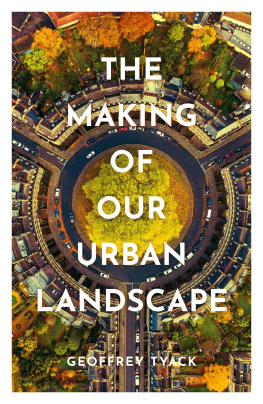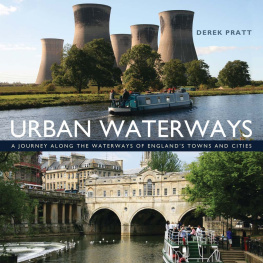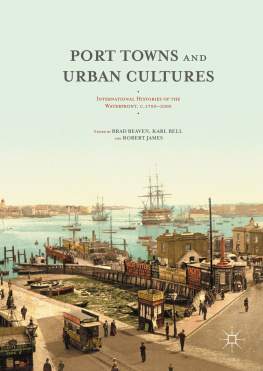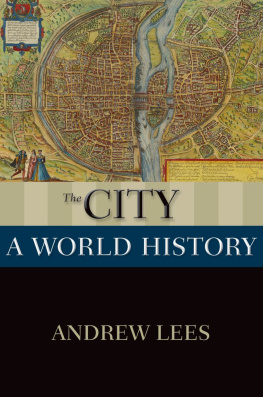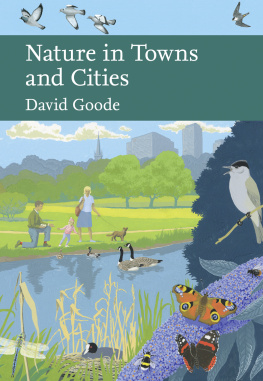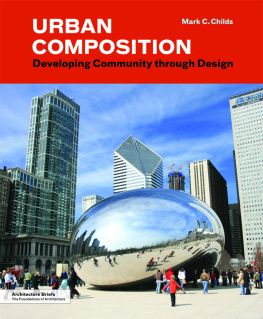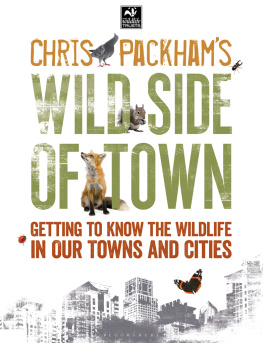The Making of Our Urban Landscape

Great Clarendon Street, Oxford, ox 2 6 dp , United Kingdom
Oxford University Press is a department of the University of Oxford. It furthers the Universitys objective of excellence in research, scholarship, and education by publishing worldwide. Oxford is a registered trade mark of Oxford University Press in the UK and in certain other countries
Geoffrey Tyack 2022
The moral rights of the author have been asserted
First Edition published in 2022
Impression: 1
All rights reserved. No part of this publication may be reproduced, stored in a retrieval system, or transmitted, in any form or by any means, without the prior permission in writing of Oxford University Press, or as expressly permitted by law, by licence or under terms agreed with the appropriate reprographics rights organization. Enquiries concerning reproduction outside the scope of the above should be sent to the Rights Department, Oxford University Press, at the address above
You must not circulate this work in any other form and you must impose this same condition on any acquirer
Published in the United States of America by Oxford University Press
198 Madison Avenue, New York, NY 10016, United States of America
British Library Cataloguing in Publication Data
Data available
Library of Congress Control Number: 2021952847
ISBN 9780198792635
ebook ISBN 9780192511232
Printed and bound in Great Britain by Clays Ltd, Elcograf S.p.A.
Links to third party websites are provided by Oxford in good faith and for information only. Oxford disclaims any responsibility for the materials contained in any third party website referenced in this work.
Preface
Over half the worlds population currently live in towns or cities, and by 2050 the number is expected to rise to two thirds. The vast majority of the British people are town-dwellers, and urban agglomerations account for some ten per cent of our land use. Towns and cities are the background against which we live our lives, and if we try to understand their history we can go some way towards understanding ourselves. Most of our towns can trace their origin back to the Middle Ages, some even to the Roman Empire, and more or less substantial traces of the past can still be seen in their streets, their buildings and their public spaces. Few visitors can be unaware of the influence of the past on the appearance of Edinburgh or Bath, but the past has also shaped the public faces of Manchester, Birmingham, Glasgow, Cardiff and other towns and cities across our island. Place-making has become something of a vogue word among urban planners in recent years, and this book has been written with the aim of explaining the processes by which the places that we often take for granted have been created over the past millennium or more.
I have been interested in the history of the urban landscape ever since my childhood in South London. My father worked as a civil servant in a former warehouse complex next to Tower Bridge, and my mother grew up in the East End; my grandmother never left it. I started exploring central London as a teenager, and on footstill the only way to properly understand towns and cities. My first paid employment involved writing the histories of North London suburbs, and since then my interests have taken me to towns throughout the British Isles, Europe and the wider world, especially the United States. A large part of the fascination of urban history lies in its variety; each town, each suburb even, has its own unique history. If the reader can share some of my enjoyment in getting to understand these places better, I will have achieved a large part of my aim.
All historians stand on the shoulders of their predecessors, and for a historian of the urban landscape those shoulders are both broad and numerous. I am indebted to early chroniclers and topographers such as John Leland in the sixteenth century and Celia Fiennes in the seventeenth, and to more recent writers such as W. G. Hoskins, the doyen of English local and landscape history (though not a lover of large cities), to the compilers of the invaluable Cambridge Urban History of Britain (2000), and to the authors of the many excellent town and city histories that have come out in recent years. I have made extensive use of multi-volume works such as the Victoria County History for those parts of England that have been covered; the Historic Towns atlas, still flourishing and expanding; and Nikolaus Pevsners Buildings of England series (especially in its second, revised incarnation), and the companion volumes on Scotland and Wales. Our understanding of urban history has been profoundly enhanced in recent years by the research of archaeologists and urban geographers, and I have also done my best to incorporate their insights into my narrative. I am grateful to Malcolm Airs, John Blair, David Clark, Perry Gauci, Trevor Rowley, Otto Saumarez-Smith, Robert Thorne and Steven Ward, who have read and commented on drafts of the chapters, but above all to my wife Penny for her companionship and her astute comments on the manuscript as it evolved. I also owe a debt of gratitude to Matthew Cotton at the Oxford University Press for encouraging me to write the book, and to Kizzy Taylor-Richelieu, Cathryn Steele and Gayathri Venkatesan for seeing it through the publication process.
This book inevitably reflects my own interests. I share William Blakes belief that art and science cannot exist but in minutely organized particulars, and I find the histories of individual places more enlightening than theories of urban development, useful though they can sometimes be. I have a special interest in buildings, both for themselves and for what they tell us about the past. I make no apology in giving more emphasis than some other writers to developments over the last two centuries. These were, after all, the years that did most to shape the urban landscapes that we experience in our daily livesthe urban population of Britain only surpassed that of rural areas in the middle of the nineteenth century. Change is, and always has been, an essential feature of urban life. I vividly remember visiting Milton Keynes, now a thriving city of some 250,000 people, when it was little more than a gleam in the eyes of planners and architects, and I finished writing this book just before the coronavirus pandemic of 2020-21, which temporarily emptied town and city centres with long-term results that still remain to be seen. To fully understand todays urban landscapes, we need to try and understand change, unearthing the layers that lie beneath the surface of what we now see and experience, and attempting to make sense of the often piecemeal, un-coordinated processes that have created the world that we now inhabit. I hope that this book will help readers do this for themselves, and to take pleasure in the process.
Geoffrey Tyack
Oxford
November 2021
Contents
Before towns existed, the British landscape had been shaped by millennia of geological activity and by generations of human intervention. These factors helped determine the siting of our towns, and they have influenced the ways in which they developed down to modern times. Towns and cities already existed in Mesopotamia as early as the fourth millennium bce , and they grew up later in Egypt, China, northern India, and eventually Mediterranean Europe. But they did not emerge in Britain, at least in a recognizable sense, until the Romans extended their control over southern parts of the island in the first century ce .

